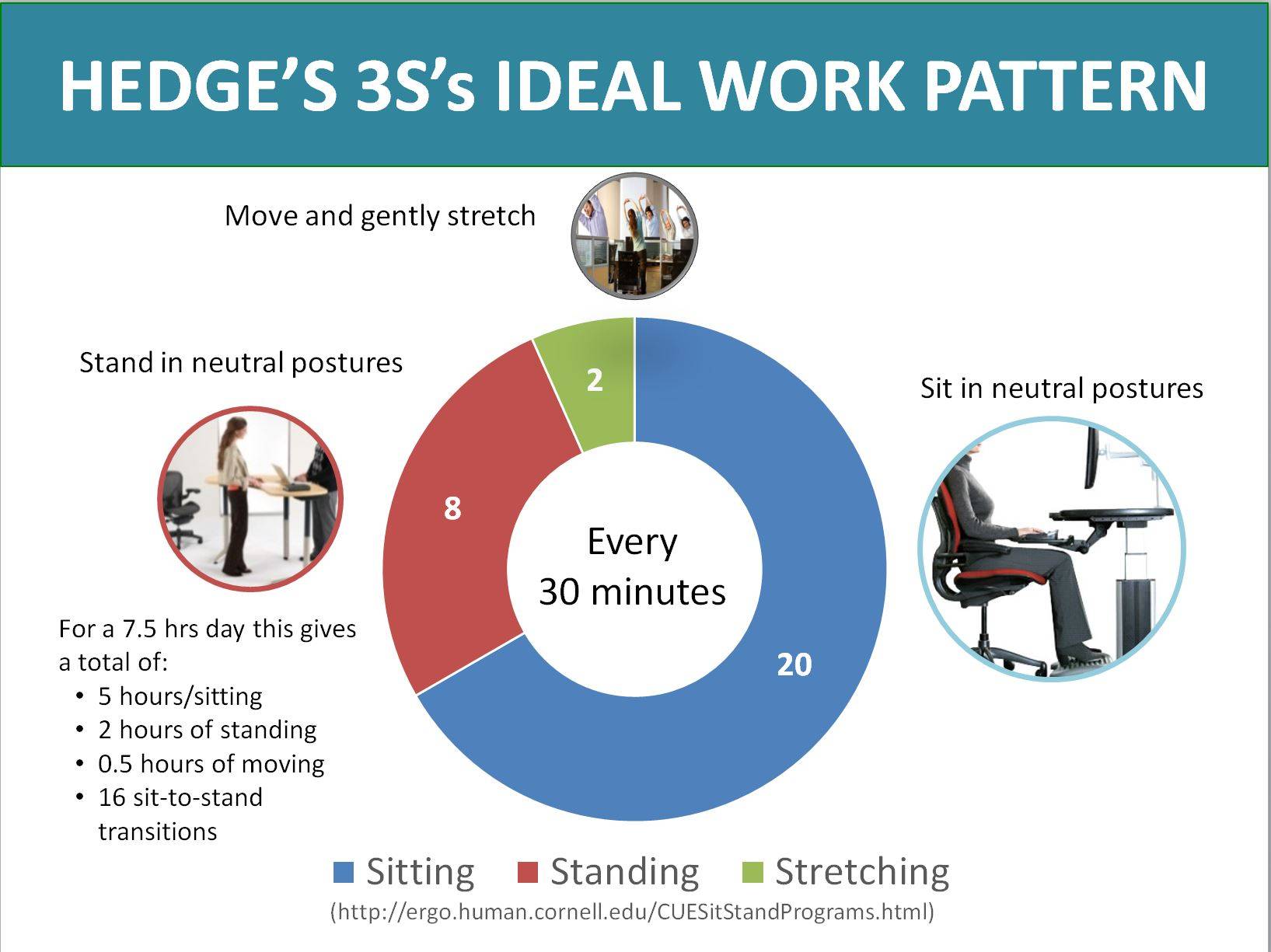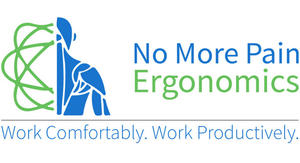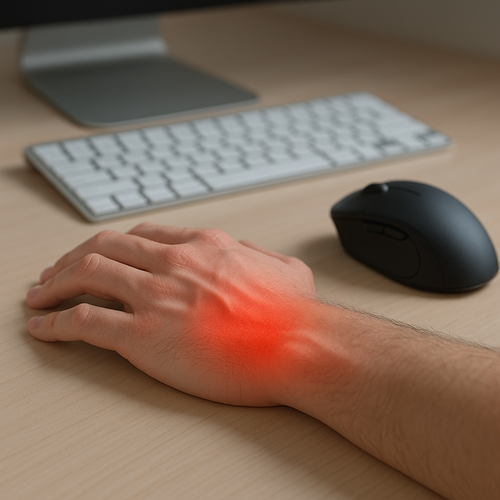Correct Standing Posture at a
Standing Desk
Julia Hillen, Occupational Therapist - No More Pain Ergonomics
Those who have standing desks are already aware of the many benefits they provide. One of those benefits is standing at your desk can help you achieve an ideal standing posture. But what exactly does "ideal standing" mean?
There are a few things to consider when deciding what standing posture is best for you:
Neck and head position
Shoulders and back
Weight distribution (heels, toes, hips)
We will go over each one of these aspects in more detail below!
The ideal standing position is not easy to achieve. It takes time and patience, but it will eventually become second nature! The important thing here is to keep practicing so you can get the most out of your standing workstation. Here are some tips on how to find an ideal standing position.

Neck and Head Posture
When working at a standing desk, try keeping your chin parallel with floor while keeping both shoulders straight and relaxed. This should naturally place your neck in a comfortable position that doesn’t cause any pain or discomfort. If this does happen however, just sit back down until you feel better before trying again!

Stand with your chin parallel with the floor while keeping both shoulders straight and relaxed.
Shoulders and Back
When standing at a standing workstation, do your best to keep your shoulders straight down toward hips while trying not to roll forward or lean backward too much. This will help you achieve the proper standing position for office workers that is less likely to result in pain or discomfort throughout the day. If you find yourself constantly leaning forward or back, try adjusting your monitor so it’s closer/farther away from you (or even change its height! Our Delux Height Adjustable Standing Desks are perfect for this!). For more information on good ergonomics, check out our guide here.

Shoulders should be relaxed and elbows by your side - if this is not the case, adjust your position and setup to ensure your posture doesn't cause pain or discomfort.
Weight Distribution
As with sitting on an office chair, standing can be more comfortable for your body if you distribute weight evenly between both feet rather than standing on just one foot. This will help relieve some pressure from other parts of the body that are being overused while standing in place all day!

Ensure not to lean toward one side or on one foot while standing. Weight should be evenly distributed between both feet.
Alternate Sitting and Standing
Too much standing can be detrimental to your health and can cause injury if performed over long periods of time. Ensure you alternate standing with sitting and moving every 30 minutes. For more information on the ideal work schedule for sitting and standing, check out our 'Hedge's 3S Work Pattern' blog post.

















← Older Post Newer Post →
0 comments
Get in Touch
Still have a question or simply want to discuss what ergonomic products are best suited? Get in touch, our expert team is available to provide free advice and support.